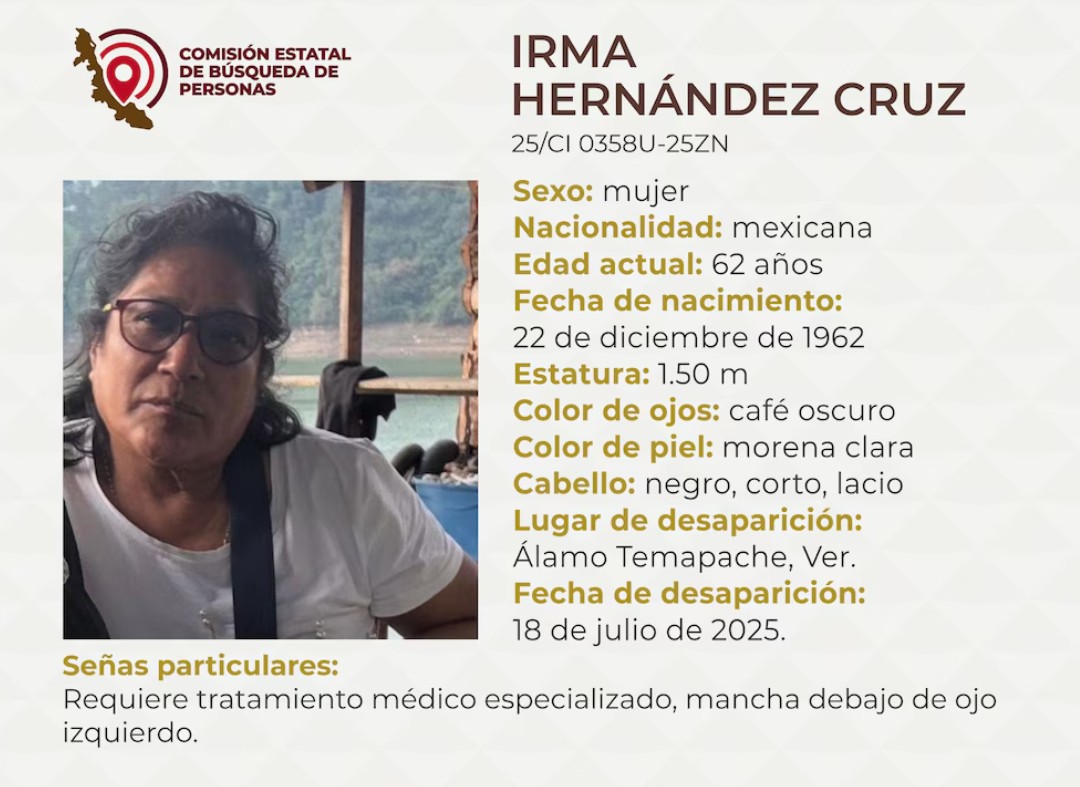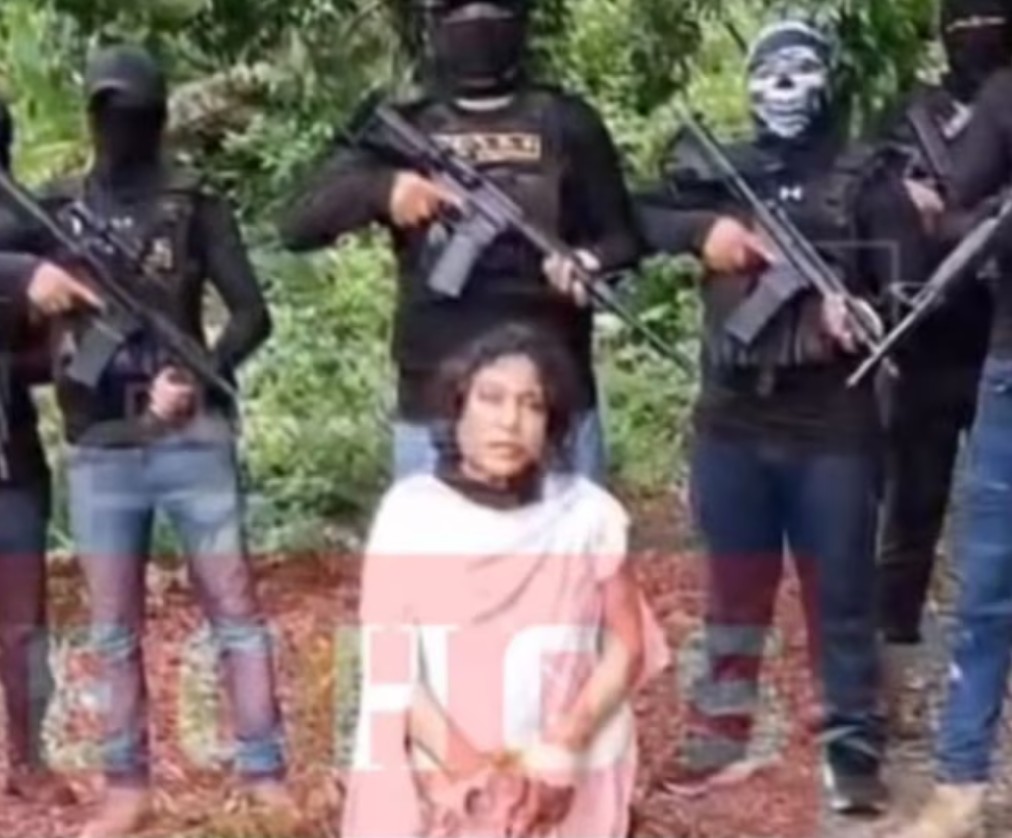The tragic story of Irma Hernández Cruz, a retired teacher and part-time taxi driver in Veracruz, Mexico, has shaken the nation. Her kidnapping in broad daylight, the release of a threatening video, and the eventual discovery of her lifeless body reveal a grim truth about the escalating control of organized crime over everyday professions in rural Mexico. More than a local tragedy, Irma’s case symbolizes the growing fear, systemic violence, and impunity that plague vast regions of the country.

A Life of Service and Video
At 62, Irma Hernández Cruz was a well-known figure in the municipality of Álamo Temapache in northern Veracruz, home to about 110,000 residents. After retiring from her career as a teacher, she continued to serve the community by owning and driving two taxis on the Estero del Ídolo route. Her role in public transport made her a familiar face and a dependable presence in town.
Yet despite her low-profile life, Irma became a target in a conflict far larger than herself. Like many other small business owners and transport workers, she was a victim of “cobro de piso” a form of extortion where cartels demand regular payments in exchange for safety or permission to operate. In regions like Veracruz, failure to comply can cost lives.
The Daylight Kidnapping
On a Friday morning, Irma was abducted by an armed group outside her taxi site on Sor Juana Inés de la Cruz Street, near the municipal market an area bustling with activity. According to eyewitnesses, the kidnappers acted methodically and without urgency, showing no fear of being stopped. No one intervened.

Irma’s sudden disappearance prompted an urgent search. The State Search Commission released a bulletin noting that she required specialized medical treatment, adding to the urgency. However, what followed shocked the public and revealed the true horror behind her abduction.
A Video Meant to Terrorize
Days after her disappearance, a disturbing video surfaced online. In it, Irma is seen kneeling on the ground, handcuffed, and surrounded by more than a dozen masked men armed with assault rifles. Speaking firmly likely under duress she identifies herself:
“My name is Irma Hernández Cruz. I drive taxi 554.”
She then issues a warning to her fellow drivers:
“Compañeros taxistas, pay your quota as you should or you’ll end up like me.”
The video also includes an ominous statement directed at rival groups:
“Stop messing around with the charros… you don’t play with the Veracruz mafia.”
Her appearance, the forced tone, and the heavily armed figures created a chilling spectacle. The men wore tactical vests marked “F.E.G.C.” the initials of Fuerzas Especiales Grupo Sombra, a known offshoot of the Gulf Cartel, now calling themselves the Mafia Veracruzana.
The video quickly circulated on social media and eventually reached the state’s governor, Rocío Nahle García, who expressed surprise that no ransom had been demanded. This led authorities to suspect that Irma’s abduction and execution were meant not for monetary gain but as a public statement an act of terror to enforce cartel control.
Found Dead on a Ranch
Six days after her abduction, on Wednesday evening, Irma’s body was found at a remote ranch between the communities of Buenos Aires and Tepetzintlilla over 40 kilometers from where she was taken. The Veracruz Attorney General’s Office confirmed the discovery, stating that there would be no impunity. However, such promises are cold comfort in a state where impunity is the norm rather than the exception.

According to the University Observatory on Violence Against Women, Veracruz has already seen 52 homicides this year, 30 of them targeting women. Irma’s death adds to this alarming toll and highlights how women are increasingly caught in the crossfire of organized crime.
The Mafia Veracruzana and Their Reign of Terror
The men who kidnapped and killed Irma claim allegiance to the Mafia Veracruzana, a splinter group of the Gulf Cartel also known as Grupo Sombra. Though relatively new, this group has gained infamy for both its brutality and its bizarre attempts at public relations, such as distributing gifts during holidays to win favor in local communities.
Operating in municipalities like Tuxpan, Poza Rica, Tantoyuca, Naranjos, and Pánuco, the Mafia Veracruzana has declared war on rival groups such as the Cártel Jalisco Nueva Generación (CJNG). Their turf war has turned parts of Veracruz into active conflict zones. The border between Veracruz and Tamaulipas, a crucial route for drug and migrant trafficking, has long been one of Mexico’s most violent regions, once dominated by the notoriously brutal Zetas cartel.
In this context, the kidnapping and murder of a local taxi driver serve both as punishment and as propaganda, a warning that the Mafia Veracruzana will tolerate no defiance.
Extortion as a Death Sentence
Irma’s story is not isolated. Just a week before her kidnapping, her fellow taxi driver Jorge Néstor was abducted near a primary school. He remains missing. These incidents underscore the routine nature of cartel violence against transport workers, small business owners, and everyday laborers.
Extortion is a daily threat in Mexico, particularly in rural and semiurban areas where law enforcement is weak or complicit. Criminal groups impose taxes on local economies, and refusal to pay often results in violence. According to recent data, around 7 million Mexicans experience extortion annually, yet only 0.2% report it due to fear of retaliation and lack of trust in authorities.
These practices aren’t just criminal; they are systematic. For example, reports recently exposed how La Familia Michoacana, another cartel, monopolized basic goods in southern Mexico State to resell them at inflated prices. Such operations demonstrate how cartels are not just violent gangs but shadow governments imposing their own laws and taxes.
A National Response and Too Little, Too Late?
In response to the nationwide crisis of extortion, President Claudia Sheinbaum and Security Secretary Omar García Harfuch launched a national anti-extortion strategy on July 6. The plan prioritizes eight states, including Veracruz, which together account for 66% of extortion complaints.
While this initiative is promising, critics argue that such strategies have failed in the past due to corruption, underfunding, and lack of coordination between federal and local forces. Whether this new plan will make a difference remains to be seen.
Irma Hernández Cruz was not a politician or a high-profile figure. She was a grandmother, a retired teacher, and a hardworking taxi driver trying to make a living. Her brutal death highlights a terrifying truth: in many parts of Mexico, performing an honest job can be a life-threatening act.
Her forced message in the cartel video was meant to instill fear, but it has also sparked outrage and sorrow. Her case is a chilling reminder that for millions of Mexicans, the threat of extortion is not a distant crime, it’s a daily reality. Unless strong and sustained action is taken, more lives will be lost, and more voices will be silenced.
“When the brave are silenced, fear speaks louder. But in remembering Irma, we must confront the cost of silence.”
News –